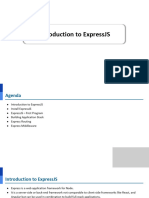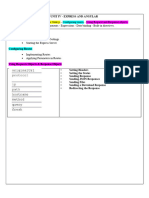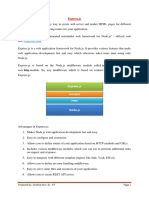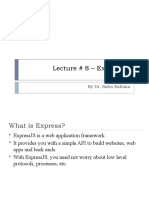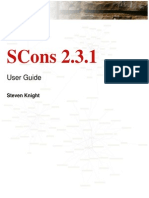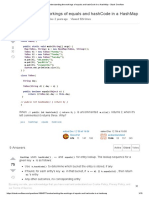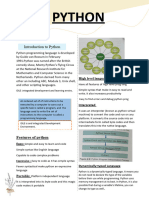0% found this document useful (0 votes)
21 views8 pagesMST Notes
Express.js is a popular Node.js web application framework for building web applications and APIs, known for its minimalism and flexibility. It supports routing, middleware, and error handling, allowing developers to create robust applications efficiently. The framework also facilitates the integration of template engines and follows the MVC architectural pattern for better organization of code.
Uploaded by
nagamani19912Copyright
© © All Rights Reserved
We take content rights seriously. If you suspect this is your content, claim it here.
Available Formats
Download as DOCX, PDF, TXT or read online on Scribd
0% found this document useful (0 votes)
21 views8 pagesMST Notes
Express.js is a popular Node.js web application framework for building web applications and APIs, known for its minimalism and flexibility. It supports routing, middleware, and error handling, allowing developers to create robust applications efficiently. The framework also facilitates the integration of template engines and follows the MVC architectural pattern for better organization of code.
Uploaded by
nagamani19912Copyright
© © All Rights Reserved
We take content rights seriously. If you suspect this is your content, claim it here.
Available Formats
Download as DOCX, PDF, TXT or read online on Scribd
/ 8






